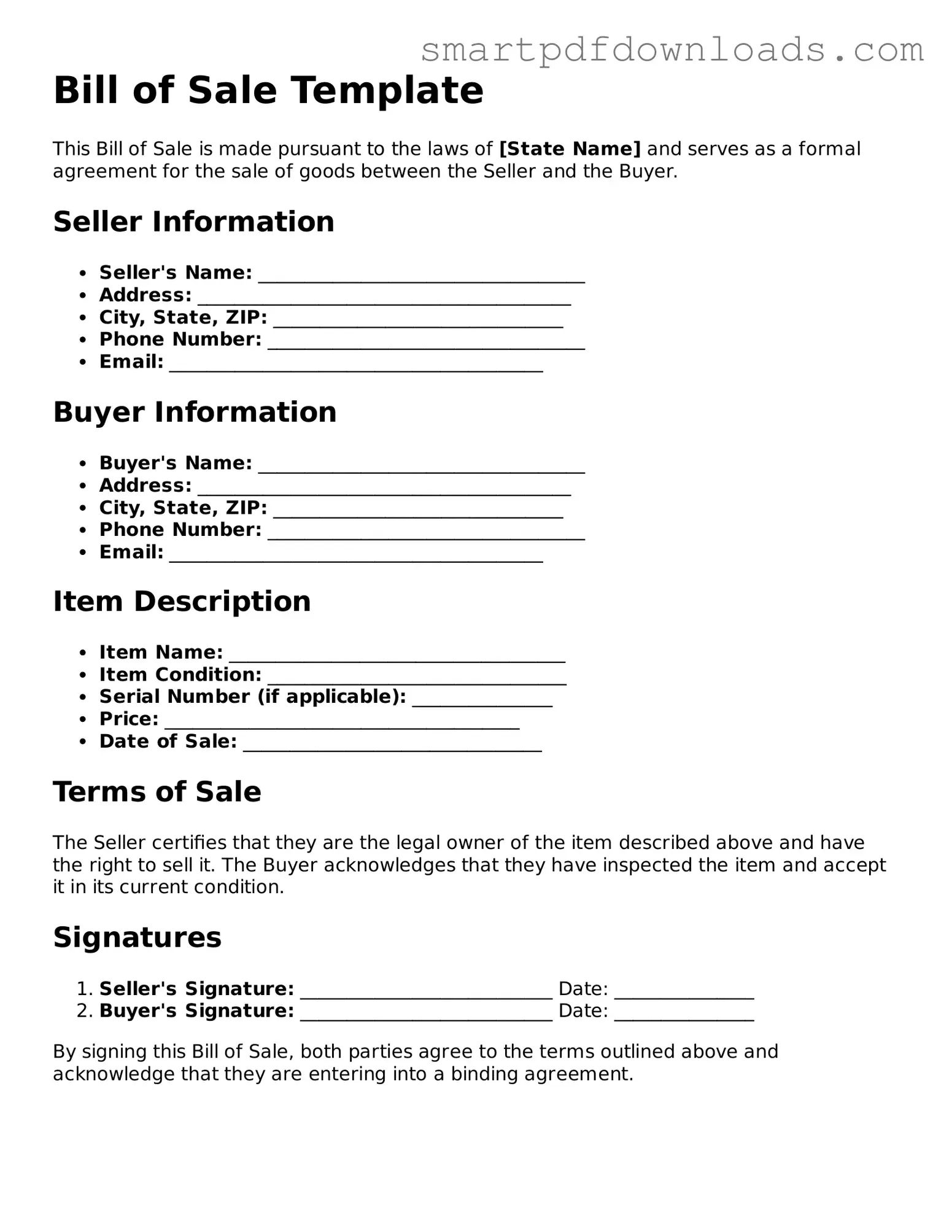Bill of Sale Template
This Bill of Sale is made pursuant to the laws of [State Name] and serves as a formal agreement for the sale of goods between the Seller and the Buyer.
Seller Information
- Seller's Name: ___________________________________
- Address: ________________________________________
- City, State, ZIP: _______________________________
- Phone Number: __________________________________
- Email: ________________________________________
Buyer Information
- Buyer's Name: ___________________________________
- Address: ________________________________________
- City, State, ZIP: _______________________________
- Phone Number: __________________________________
- Email: ________________________________________
Item Description
- Item Name: ____________________________________
- Item Condition: ________________________________
- Serial Number (if applicable): _______________
- Price: ______________________________________
- Date of Sale: ________________________________
Terms of Sale
The Seller certifies that they are the legal owner of the item described above and have the right to sell it. The Buyer acknowledges that they have inspected the item and accept it in its current condition.
Signatures
- Seller's Signature: ___________________________ Date: _______________
- Buyer's Signature: ___________________________ Date: _______________
By signing this Bill of Sale, both parties agree to the terms outlined above and acknowledge that they are entering into a binding agreement.
